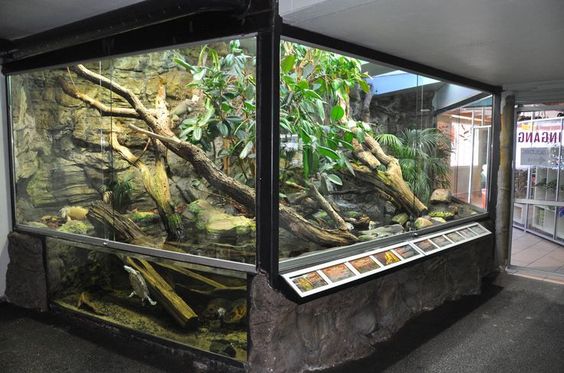Reptiles like snakes, lizards, turtles and tortoises make great pets for those interested in unique and low maintenance animals. However, to keep reptiles healthy and thriving, it is important to provide them with the proper Reptile Enclosure that simulates their natural habitat. This article will discuss the key factors to consider when designing and setting up the ideal reptile enclosure.
Choosing the Right Enclosure Type
The type of enclosure needed will depend on the specific reptile species. For smaller reptiles like geckos and smaller snakes, a glass terrarium is generally suitable. Larger reptiles may require a larger wood or plastic vivarium. Some key enclosure types include:
– Glass Terrarium: Commonly used for smaller reptiles up to 18″ in length. Glass allows for great visibility but can lose heat more quickly than other materials.
– Plastic or Wood Vivarium: Larger plastic or wooden enclosures with mesh lids provide more ventilation. Ideal for reptiles 18″ or longer as they retain heat better than glass.
– Outdoor Enclosure: For species that benefit from natural sunlight, like bearded dragons, a secured outdoor enclosure can be built. Ensure the area is protected from other predators and extreme weather.
Establishing the Right Environment
Once you have the enclosure, filling it properly to simulate the reptile’s natural habitat is important for its health, behavior and enclosure maintenance. Key environmental factors to consider include:
Temperature and Humidity Control
Different reptiles require specific temperature and humidity ranges to survive. Uniform temperature gradients from warm to cool zones should be established using under tank heaters, ceramic heat emitters or radiant heat panels. Hygrometers read humidity levels which should be controlled using substrate choice, misting, and drainage.
Substrate Selection
The substrate or flooring material is important to consider for aesthetics, absorption, and risks of impaction. Common options include newspapers, organic topsoil mixtures, orchid bark, and specially manufactured substrates. Aspen bedding works well for most reptiles.
Hiding Spots and Climbing Areas
Include multiple hides to allow for thermoregulation and reduce stress. For arboreal species, branches, vines, or rocky ledges provide vertical space. All decor should be secure and safe for the reptile with no risk of toppling over.
Proper Lighting
All reptiles require specific lighting including heating and UVB lighting if needing to thermoregulate or metabolize calcium respectively. Ensure lighting fixtures do not get too hot and risk burning the reptile. A day and night cycle using a timer is important for natural behaviors.
Fresh Water and Feeding Stations
All reptiles need fresh, clean water provided in a bowl that cannot be tipped or soiled easily. For insectivores, feeding stations allow crickets and worms to be contained while feeding. Reposition hides and decor to avoid soiled substrate areas.
Enclosure Cleaning and Maintenance
With frequent spot cleaning and deep cleans on a regular schedule, the reptile’s living space can be kept hygienic and odor-free. Thoroughly disinfect surfaces during full enclosure cleanings. Replace substrate, hides and décor when soiled or damaged to support the reptile’s well-being. Proper enclosure maintenance is key to keeping pet reptiles healthy long-term.
Popular Reptile Enclosure Décor Ideas
While the basics of temperature, humidity and structural needs should be established first, incorporating naturalistic décor elements into the enclosure can further stimulate reptiles and provide enrichment. Some popular décor choices reptile owners use include:
– Rocks and Driftwood: Great texture additions that also hold heat well for basking spots.
– Plants: Fake or dried plants for climbing and hiding provide visual interest. Succulents also work for humid enclosures.
– Backgrounds: Using Styrofoam, silicone, or cardboard mounted on the back and sides creates the illusion of space.
– Tunnels and Logs: Hollow logs allow reptiles to completely hide inside or provide paths between hides.
– Decorative Borders: Edging the enclosure with silicone, cork bark or other textures adds dimension.
With careful planning on enclosure type, environment, cleaning routine and naturalistic décor, pet reptile owners can create a sanctuary perfect for their scaly friend’s mental and physical needs. Proper setup is key to keeping reptiles thriving as pets for many years to come. With the right home, caring for reptiles can be an extremely rewarding experience.
*Note:
- Source: CoherentMI, Public sources, Desk research
- We have leveraged AI tools to mine information and compile it

